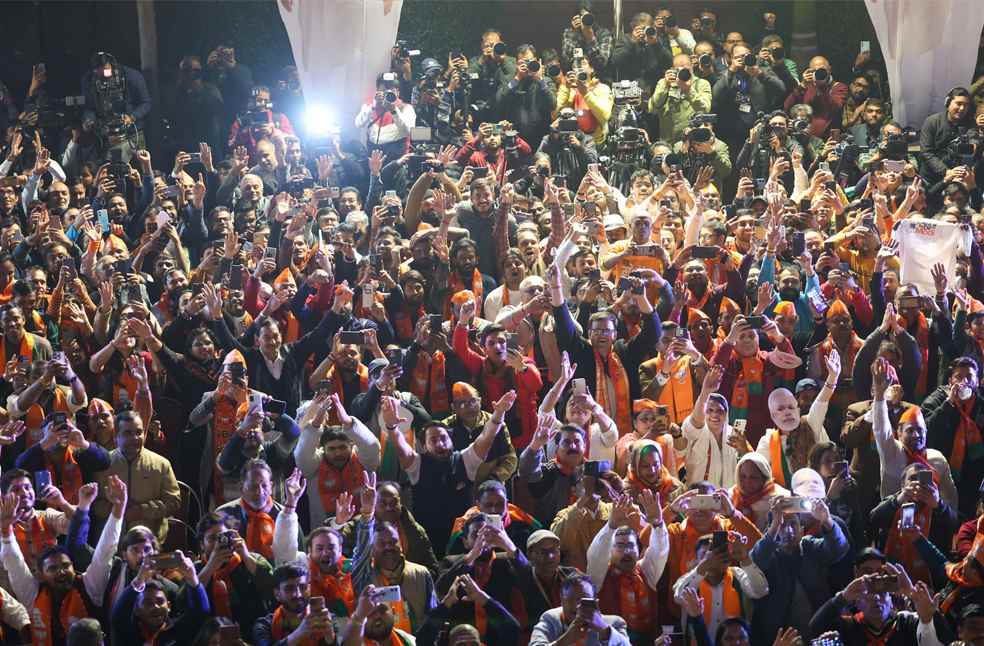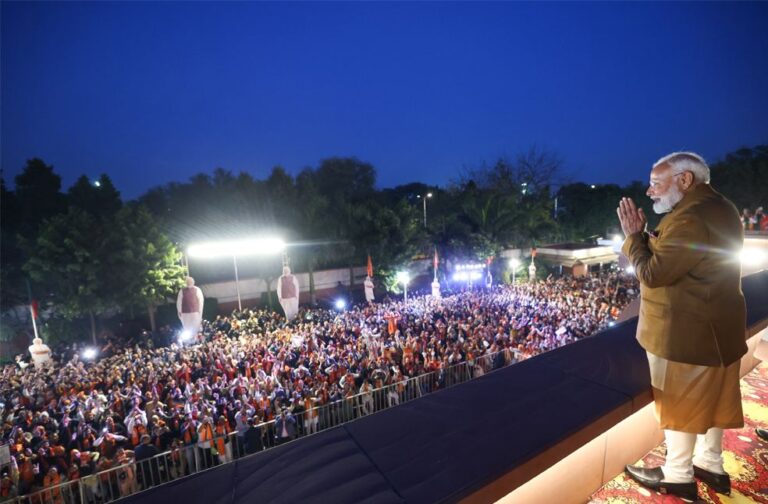New Delhi, India: For the first time in nearly three decades, Indian Prime Minister Narendra Modi’s Bharatiya Janata Party (BJP) has achieved a decisive victory in the Delhi legislative assembly elections, marking a significant shift in the capital’s political landscape.
According to data from the Election Commission of India (EC), BJP has won or is leading in 48 out of 70 seats, surpassing the 35-seat majority needed to form the government. Meanwhile, the incumbent Aam Aadmi Party (AAP) trails with 22 seats.
AAP concedes defeat
Celebrating the BJP’s triumph, Modi took to social media, declaring, “Development wins, good governance triumphs,” and promised to leave “no stone unturned” in advancing Delhi’s progress.
AAP leader and former Delhi Chief Minister Arvind Kejriwal, in a video message, humbly accepted the verdict, congratulating BJP on its victory. “I hope they live up to the expectations of the people who voted for them,” he stated.
A high-stakes Election
The election was a prestige battle for both parties, given Delhi’s symbolic significance. AAP had governed the capital since 2013, gaining public support for its focus on education, healthcare, and welfare programs. However, the party has faced mounting challenges, including corruption allegations and legal troubles involving its leaders, which it has denied.
For BJP, securing Delhi is not just a political win—it marks a crucial return to power after being out of office in the capital since 1998. The party deployed significant resources for the campaign, with Modi and Home Minister Amit Shah actively participating in rallies and voter outreach efforts.
Congress fails
Congress, the main opposition party at the national level, suffered a complete wipeout, failing to win a single seat. The party ruled Delhi from 1998 to 2013 before being ousted amid corruption allegations that saw voters turn to AAP. Since then, Congress has struggled to regain relevance in the capital.
AAP’s decline
With a voter turnout of over 60%, experts believe BJP’s win reinforces Modi’s appeal after the party lost its outright majority in last year’s general elections. The outcome is a significant setback for AAP, raising questions about its future beyond its governance in Punjab.

Once a champion of the middle-class-led anti-corruption movement, Kejriwal gradually shifted AAP’s focus towards welfare programs targeting the poor. However, corruption allegations, the arrests of key leaders, and Kejriwal’s own legal troubles have severely damaged the party’s standing. This created a political vacuum that BJP swiftly filled, leveraging its “double-engine” governance strategy—aligning state and federal leadership for stability and development.
Key Election Outcomes
BJP’s “Parivartan” (change) campaign struck a chord with voters, helping it secure its first majority in Delhi in nearly 30 years. This victory, following BJP’s recent successes in Haryana and Maharashtra, solidifies the party’s resurgence after its 2024 electoral setbacks.
Among the biggest upsets, Kejriwal lost his seat in the New Delhi constituency, while AAP leader Manish Sisodia was defeated in Jangpura. Incumbent Chief Minister Atishi managed to retain her seat in Kalkaji, but only by a narrow margin.
Despite weeks of intense campaigning, one major issue—Delhi’s air pollution crisis—was largely absent from the election discourse. BJP had promised to reduce the city’s Air Quality Index (AQI) by half by 2030, while other parties also referenced the issue in their manifestos. However, it did not become a defining topic in the election.
Delhi’s unique governance structure, where the federally-appointed Lieutenant Governor oversees key areas like public order and land, has often led to conflicts between the central and state governments when controlled by opposing parties. Now, with BJP in power at both levels, the party aims to bring stability and long-term development to the capital.



